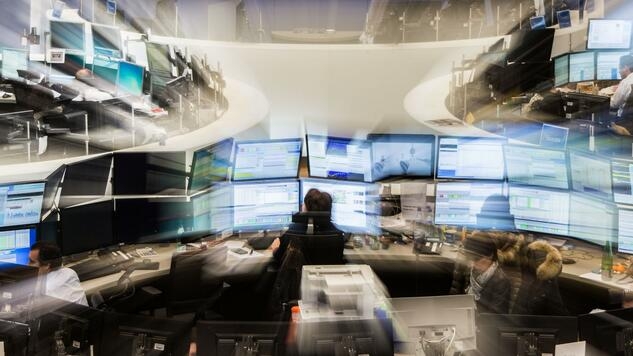
Escalating concerns around a possible Russian invasion of Ukraine led to broad-based risk-off moves on Friday with equities plunging, bond yields falling back and the JPY and USD appreciating. Market expectations of a 50bps Fed hike in March have been scaled back to around 50%. NZ rates went sharply higher on Friday, with the 10-year swap rate breaking 3% for the first time since 2018 and the 2-year rate hitting a six-year high, but we should see some reversal today.
On Friday, investors’ attention temporarily shifted away from the Fed’s upcoming March meeting after the US warned an attack on Ukraine could take place as early as next week. Russia continues to deny that it plans to invade Ukraine, but the US and other countries have advised citizens to leave. There was no breakthrough in talks between Biden and Putin over the weekend while German Chancellor Scholz will travel to Moscow on Tuesday in the hope of finding a diplomatic solution. The US has signaled that it will move ahead with harsh economic sanctions on Russia if it invades Ukraine.
The possibility of near-term military conflict in Ukraine saw steep losses for equity markets on Friday. The S&P500 was down by 1.9% following on from Thursday’s 1.8% decline after the market ramped up expectations of Fed rate hikes. The NASDAQ was off by 2.8%, bringing its two-day decline to almost 5%. European benchmarks were down by 0.6% - 1.2%. Geopolitical events such as this are often met with an initial risk-off response although the impact is typically not long lasting.
Oil surged higher on Friday with Brent crude approaching the magical $100-mark (+4% to $97.59) with the market wary of possible sanctions that could affect Russian oil exports, impeding supply in an already tight oil market. European natural gas futures were 4% higher (Biden has consistently said the Nord Stream 2 gas pipeline to Germany will not happen if there is an invasion), although they remain well below the panic levels reached late last year.
After their big increases on Thursday night after the upside surprise to US CPI, Friday saw a sharp reversal in US and global bond rates. The US 10-year rate, which broke above 2% for the first time since 2019 on Friday morning, fell 9bps to 1.94% while the 2-year rate fell a chunky 8bps, to 1.50% as the market pared back Fed rate hike expectations.
The falls in short-end US rates were given added impetus as the Fed released its bond buying schedule for the next month, effectively quashing speculation that there could be an extremely rare inter-meeting rate hike before the scheduled March decision (the only inter-meeting hike in the Post-Volcker era was a 25bps hike in April 1994). The scheduled release of its bond buying schedule was important because the Fed has repeatedly stated that it won’t raise rates while it is still buying bonds. Maverick Fed President Bullard had caused a brief flurry of excitement on Friday when he said he was open to considering an inter-meeting hike, which the market duly started to price in. The odds of an inter-meeting hike were significantly reduced after the Fed’s announcement on Friday, to roughly 10% on our back-of-the-envelope estimates.
The market now prices around a 50% chance of a 50bps Fed hike in March, down from around 85% on Friday morning. Richmond Fed President Barkin said he was open to a 50bps hike “conceptually” but said he’d “have to be convinced”. Likewise, San Francisco Fed President Daly said a 50bps hike was “not my preference”, adding in an interview with the FT over the weekend that “abrupt and aggressive action can actually have a destabilising effect”. Either way, Barkin said he favoured getting the cash rate back to pre-Covid levels “relatively soon ”, reinforcing just how out of date the Fed’s most recent ‘dot plot’ projections, which were only released in December, already are. Citi, Deutsche and HSBC were among banks to change their Fed calls in the wake of the CPI release, now calling for a 50bps hike in March, while Goldman Sachs said it now expects seven consecutive hikes by year end.
In economic data, the University of Michigan consumer confidence index was very weak, falling to 61.7 in February, its lowest level since 2011 (lower even than the levels seen in early 2020 after the initial lockdowns). Given the Omicron wave in the US is clearly past its peak, analysts are pointing the finger at high inflation, which is eroding real wages, as the main reason for the fall in consumer confidence. Before getting too bearish on the outlook for US consumer spending, it’s worth remembering that households are still sitting on huge savings balances built up during the pandemic. Markets brushed off the confidence data.
The USD was stronger on Friday, by around 0.2% on a BBDXY basis, benefiting from the pullback in risk appetite. The JPY was the other main beneficiary, gaining 0.5% on Friday.
With the market cognisant that Europe will likely suffer some economic fallout from any sanctions on Russia, the EUR was down 0.7% on Friday, to 1.1350. The fall in the EUR was assisted by comments from ECB President Lagarde who is seemingly trying to temper escalating ECB rate hike expectations. In an interview with German media, Lagarde reiterated what she said earlier in the week, that any tightening would be “gradual”, adding that raising rates now “would not solve any of the current problems.” The NZD and AUD were 0.3-0.4% lower on Friday as risk appetite retreated and the USD strengthened, the NZD closing the week around 0.6650.
As announced on Thursday evening, the BoJ will conduct an unlimited bond buying operation today to enforce its Yield Curve Control target. Prior to the announcement, the 10-year Japan yield was approaching the 0.25% level which is seen as the upper-limit of the BoJ’s tolerance. Given the falls in global bond yields on Friday night, its unlikely the BoJ will get many (if any) offers at its 0.25% yield cap, but it reaffirms the BoJ’s desire to keep its monetary policy stimulus in place even as other central banks move ever closer to tightener.
NZ rates were sharply higher on Friday reflecting the big overnight move in the US Treasury curve. The 2-year swap rate jumped 9bps, to a new six-year high of 2.56%, while the 10-year swap rate traded through 3% in the morning for the first time since late 2018. Rates are likely to reverse most of Friday’s moves today given the sharp retracement in global bonds after the NZ market closed.
The RBNZ’s inflation expectations survey was broadly as expected. 2-year ahead inflation expectations picked up from 2.96% to 3.27%, a more than 30-year high, but no surprise given the series tends to track movements in headline inflation. 5-year and 10-year inflation expectations picked up slightly, to 2.30% and 2.12% respectively, still relatively close to the midpoint of the RBNZ’s 1-3% inflation target. The market reaction was muted, understandable given the very small sample size (just 33 respondents), which raises questions about its representativeness, and given an increase was no shock.
With the US market now pricing a sizeable chance of a 50bps hike by the Fed at its March meeting, the local market has started to give more thought to the prospect the RBNZ could do likewise later this month. The probability of a 50bps RBNZ hike in February moved up to around 35% on Friday. While we agree the market is right to price the risk of a 50bps hike by the RBNZ (this seems more likely than a no change decision), we would note that the RBNZ already has some rate hikes on the board (unlike the Fed) and there are uncertainties like the current Omicron outbreak, which is just getting started in NZ, whereas in the US the Omicron wave is clearly past its peak. Market expectations for a 50bps RBNZ move are also being kept in check by the RBNZ’s messaging from its last meeting that “considered steps” were appropriate when removing stimulus.
The focus offshore this week is likely to be on Russia-Ukraine developments and commentary from Fed officials, with market pricing delicately balanced between a 50bps hike and a 25bps move. The Fed has a long track record of delivering on what the market has priced for rate hikes so, if it wants the market pricing 25bps into the meeting, we should expect Fed officials to steer investors in that direction in the coming weeks. Fed officials Bullard, Mester, Evans and Waller are on the speaking circuit this week while the minutes to the last FOMC meeting are released. There is only second-tier data released domestically.
Daily exchange rates
Select chart tabs
2 Comments
If 50 bps hike not now then when? This is the only time to do it so we can control the runaway prices. The price of everything on Nz is through the roof be it, food, houses, rents, commodities. Only thing which is going down in NZ is savings and bank balances of poor people.
With high prices everyone else is getting richer. The government taking in more in taxes, corporations earning more with commodity prices, business getting subsidy, pandemic payments etc. What's for a poor person?
This government was supposed to be pro poor. They are just all talk and stab in the back of poor worker.
If war happens, it will just make inflation worse not better. And that will need to be dealt with in future more painfully. If Feds are not making moves and this war happens, it's almost a guarantee of global markets crash in future.

We welcome your comments below. If you are not already registered, please register to comment.
Remember we welcome robust, respectful and insightful debate. We don't welcome abusive or defamatory comments and will de-register those repeatedly making such comments. Our current comment policy is here.